Educating Youth About Wasted Food
On this page:
- Why Educating Youth About Wasted Food is Important
- Resources for Use in the Classroom or to Reduce Wasted Food at School
- Resources for Composting with Youth
- Other Resources Related to Wasted Food Prevention and Composting
Why Educating Youth About Wasted Food is Important
Most people don’t realize how much food they throw away every day. Food can go to waste due to a variety of complex, interlocking behaviors and habits that may be hard to break. It is critical for everyone, including children and youth, to understand that food is a valuable resource that takes natural resources, energy, labor, and time to grow and consume – and that wasting food by throwing it in the trash or down the drain wastes all that time, energy, and effort as well. Involving children in the planning, shopping, cooking of food and managing of leftovers teaches them sustainable habits and skills at an early age that potentially will stick throughout their lives. Small changes over time make a big difference and can extend outward from the classroom to the home and eventually the community at large.
The following resources can be used in the home with your family, in school, or with youth groups. This page also includes some ideas of tasks/activities children can assist with in the planning for and preparing of meals in the home. Finally, this page includes some resources for how to compost with youth.
At-Home Food Waste Prevention Activities to Promote with Youth
Ages 5 and under
- Ask children what they like to eat and what new foods they might like to try.
- Have the children clean up after the meal (clear the table, scrape plate waste into the appropriate waste bin, store and label leftovers as appropriate).
- Start having a “remix/encore night” once a week where they can actively choose which previously prepared foods (i.e., leftovers) they’d like to eat.
Ages 5-10
- Have the children research recipes that sound good to them, or use ingredients that they like.
- Bring children to the store and have them help pick out fruits and vegetables.
- Encourage children to assist with the preparation of the meal (e.g., washing vegetables, mixing ingredients).
- Have the children clean up after the meal (clear the table, scrape plate waste into the appropriate waste bin, store and label leftovers as appropriate).
- Educate children on the impacts of wasted food going to landfill and why it is important to not waste food.
Ages 10-12
- Encourage children to find recipes that include ingredients that they like, and cook them together.
- Include children in meal planning. Discuss as a family what ingredients are already in the house and what can be made with what’s on hand, and what needs to be purchased.
- Have children label all leftover containers with contents and dates as they go into the fridge and freezer.
- Assign “leftover monitor” to remind other family members about leftover items that are still edible and remixed into a new meal.
- Have children weigh household food scraps weekly and devise a plan to waste less over time.
Ages 13+
- Encourage brainstorming about why certain ingredients seem to be wasted more in the home; have children research recipes that use those ingredients.
- Have children write out contents of freezer, refrigerator, and pantry to cross-reference before going to the store.
- Designate a “fridge clean out night” once a week where family members repurpose and consume leftovers and other food that needs to be eaten.
Resources for Use in the Classroom or to Reduce Wasted Food at School
Two types of resources are listed below. One is for teaching school-aged children about the effects of wasted food. The other is for use in schools that wish to reduce the amount of food waste generated by their school’s cafeteria. Reducing waste in schools can begin with conducting a waste audit (with participation by students, staff, parents, and other community member volunteers) and reminding teachers and cafeteria staff what makes a reimbursable meal at their school, so students have options when it comes to their food choices. Schools can also set up share tables to make excess food from breakfast or lunch available for others.
These efforts may have positive spillover effects in getting students to talk about wasted food at home, educating their families on the issue of wasted food, and coming up with solutions that can be worked into their households’ everyday life.
Classroom Lessons and Resources
Student Curriculum: Recipes for Healthy Kids and a Healthy Environment (U.S. EPA)
This nine-lesson program, Recipes for Healthy Kids and a Healthy Environment, was designed to excite kids about environmental health and empower them to take steps in their everyday lives to improve the environment for their community and reduce their environmental risk. Lesson 8 highlights sustainable eating, healthy foods, and community gardens.
Food Matters Action Kit (Commission for Environmental Cooperation)
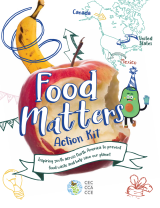
This resource includes an action kit and activity guide available in English, French and Spanish. Materials are divided between older and younger audiences. The website also includes videos on how to conduct some of the activities in the toolkit. In addition to classroom learning, this kit includes many activities and discussion prompts for use in the home. There are additional booklets and posters available in Spanish and Mayan.
Food Waste Warriors (World Wildlife Fund)
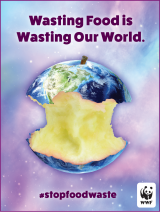
This kit includes lessons for grades kindergarten through 12, activities, and resources to teach the planetary impact of what we eat and what we throw away. It is divided into sections based on grade level. The kit also contains slide shows for younger and older learners, games, quizzes, videos, and posters about food waste education. The Cafeteria Calendar can be used to help schools plan a year of engagement on the topic of wasted food, and the website includes two case studies on school-specific interventions: 1) bulk milk purchasing and 2) reducing waste in the school cafeteria. The kit also includes tools to help conduct a school waste audit. Available in Spanish.
Food Waste Curriculum: The Nature of Teaching (Purdue University Ag Extension)
Each unit in this curriculum set contains one or more lesson plans that meet Common Core English/Language Arts, Math, and Next Generation Science Standards. Most lessons are kindergarten through 5th grade, but some middle school and high school lessons are included. Topics include food waste’s impact on the environment and natural resources, costs of transporting food and food waste, as well as potential food waste solutions. Other resources include videos on food waste and ideas on how to prevent food waste in the home.

Where Does My Food Waste Go? (University of Illinois Extension)
This activity encourages students to investigate food waste in the school cafeteria. Students either observe other classes during lunch as they throw away their food scraps and packaging or watch a video typical of a lunchroom experience. The unit culminates in a school- or community-specific action plan that the students develop and propose to implement. This food waste unit has been created by the Office for Mathematics, Science, and Technology Education in collaboration with the Illinois Environmental Protection Agency. Additional resources on this page include: a teacher guide, material and supply lists, and multiple student activity sheets.
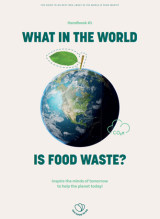
Food: Waste Less and Enjoy – It’s Good for All of Us! (Fuel Up to Play 60)
This resource challenges students to find ways to reduce food waste in their school. It provides opportunities to share or give away unused food and recycle food that can’t be donated.
Open-Source Food Waste Curriculum (Teachers Pay Teachers)
Various curricula connecting wasted food to environmental impacts from a catalog of educator-created learning content and tools.
Too Good Too Go Next Gen (Too Good To Go)
These two handbooks on food waste basics and food waste reduction techniques are designed for use both in the classroom and at home. There are different playful and educational activities for groups ages 6-11 (five total activities) and 9-11 (four total activities). The handbooks offer a starting point for both parents and educators on topics related to food loss and waste and how it can be avoided.
Resources to Reduce Wasted Food at School
Guide to Conducting Student Food Waste Audits (pdf)(3 MB)
Prepared by the USDA, EPA, and the University of Arkansas, this step-by-step guide can assist schools in better understanding their waste streams by conducting an audit. The guide also contains food waste prevention tips.
Food Waste Reduction Toolkit for Illinois Schools (Seven Generations Ahead)
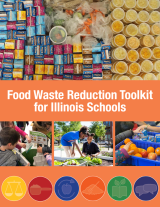
This toolkit is a comprehensive resource that provides all schools the tools needed to tackle the issue of wasted food. It identifies the main sources of wasted food and offers strategies for food waste prevention, recovery and redistribution, composting, education and engagement, as well as celebrating success. The toolkit includes opportunities for students to participate in multiple stages of the process by providing hands-on classroom or service-learning projects, curricula and lessons about food and food waste, and teaching tools and resources.
Food Waste Reduction Toolkit for Rhode Island Schools (Rhode Island Schools Recycling Project)
This toolkit was adapted from the Food Waste Reduction Toolkit for Illinois Schools, and similarly identifies the main sources of wasted food and offers strategies for food waste prevention, recovery and redistribution, composting, education and engagement, as well as celebrating success.
Share Table Guidance for Washington, DC Schools (pdf)(1,435 KB)(Office of the State Superintendent of Education and DC Health)
This two-page handout provides guidance on setting up a share table (where students can place unwanted items from their lunch) in one’s school. Excess foods can then be shared with other students and community members either during lunch or at the end of the school day.
Washington School Food Share Program Toolkit (pdf)(1,946 KB)(U.S. EPA)
A coalition of partner organizations in Washington State has developed the School Food Share Program to recover and redirect usable food from schools to local food banks. This program outlines the steps and guidelines by which schools can collect the leftover, edible food in the cafeteria, set it aside in bins for donation in available cooler space, and have it delivered to the local food bank for distribution to its customers. The guide also includes information on how to conduct a waste audit; communications strategies to engage different partners such as school employees, parents, and lunchroom staff; signs and posters, and case studies of other school food share programs.
Oregon School Food Share Program Guide (pdf)(6.9 MB)(U.S. EPA)
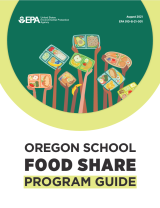
EPA developed this guide in partnership with Oregon Green Schools. It focuses on the steps required to recover potentially wasted food in schools to minimize waste and reduce food insecurity. The guide also includes policy tools for reducing food waste and packaging at schools, federal and local policies on food donation, communication resources, example food waste audit and diversion guides, as well as case studies on food share programs from around the state of Oregon.
StopWaste 4Rs (Reduce, Reuse, Recycle, Rot (Compost)) (StopWaste Alameda County)
This resource offers technical assistance and training to those wishing to create a food waste reduction program in their school. The website includes videos on the following topics: 1) a virtual transfer station field trip; 2) how to conduct a waste audit and sort landfill, recycling, and composting; and, 3) how to set up a share table at your school, and more.
Reducing Food Waste at K-12 Schools (USDA)
This website offers strategies to reduce waste at one’s school by ensuring that students consume what they take from their school lunch program. It includes: 1) information on how to conduct a waste audit; 2) infographics and tips for school staff, parents and students on how to help prevent wasted food
Wasting Less Food in K-12 Settings: Best Practices for Success (Natural Resources Defense Council)
his issue brief outlines the role that schools can have in reducing wasted food that comes from their cafeteria.
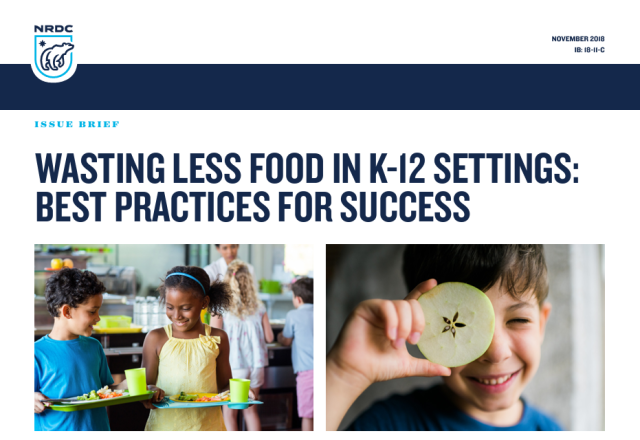
Food Waste Warriors: A Deep Dive into Food Waste at U.S. Schools (World Wildlife Fund)
In the spring of 2019, WWF, with support from The Kroger Co. Foundation and the US EPA, looked at cafeteria plate waste in 46 schools in nine US cities across eight states. The detailed results of this plate waste audit are included in this report.
Resources for Composting with Youth
The knowledge and skills needed for properly composting is different than acquiring knowledge and skills on preventing food waste in the first place. The following resources can be used to engage with youth on the basics of composting, either at home or at school:
- ILSR Guide to Composting On-Site at Schools (Institute for Local Self-Reliance)
- Composting at School (pdf)(4.6 MB) (Chittenden County, Vermont)
- School Composting: Let’s Get Growing (Cornell University Extension)
- School Composting: A Manual for Connecticut Schools (pdf)(3.4 MB) (Town of Mansfield, Connecticut)
- Kiss The Ground Soil Story Curriculum (Kiss the Ground) (Available in Spanish)
Other Resources About Wasted Food and Composting
- Preventing Wasted Food at Home (U.S. EPA)
- Composting at Home (U.S. EPA)
- Social Marketing Toolkits: Preventing Wasted Food in Your Community and Composting Food Scraps in Your Community (U.S. EPA)
- Food Too Good To Waste implementation Guide and Toolkit (U.S. EPA)
- Further with Food (Center for Loss and Waste Solutions) – Further with Food provides comprehensive information about food loss and waste in the United States and about solutions dedicated to reducing it. This virtual resource center is a platform to find and share information about proven solutions and innovative new approaches to reduce the volume of surplus food generated, feed hungry people, and divert food and scraps to the highest beneficial use. It can be sorted by audience to focus on youth and schools.
